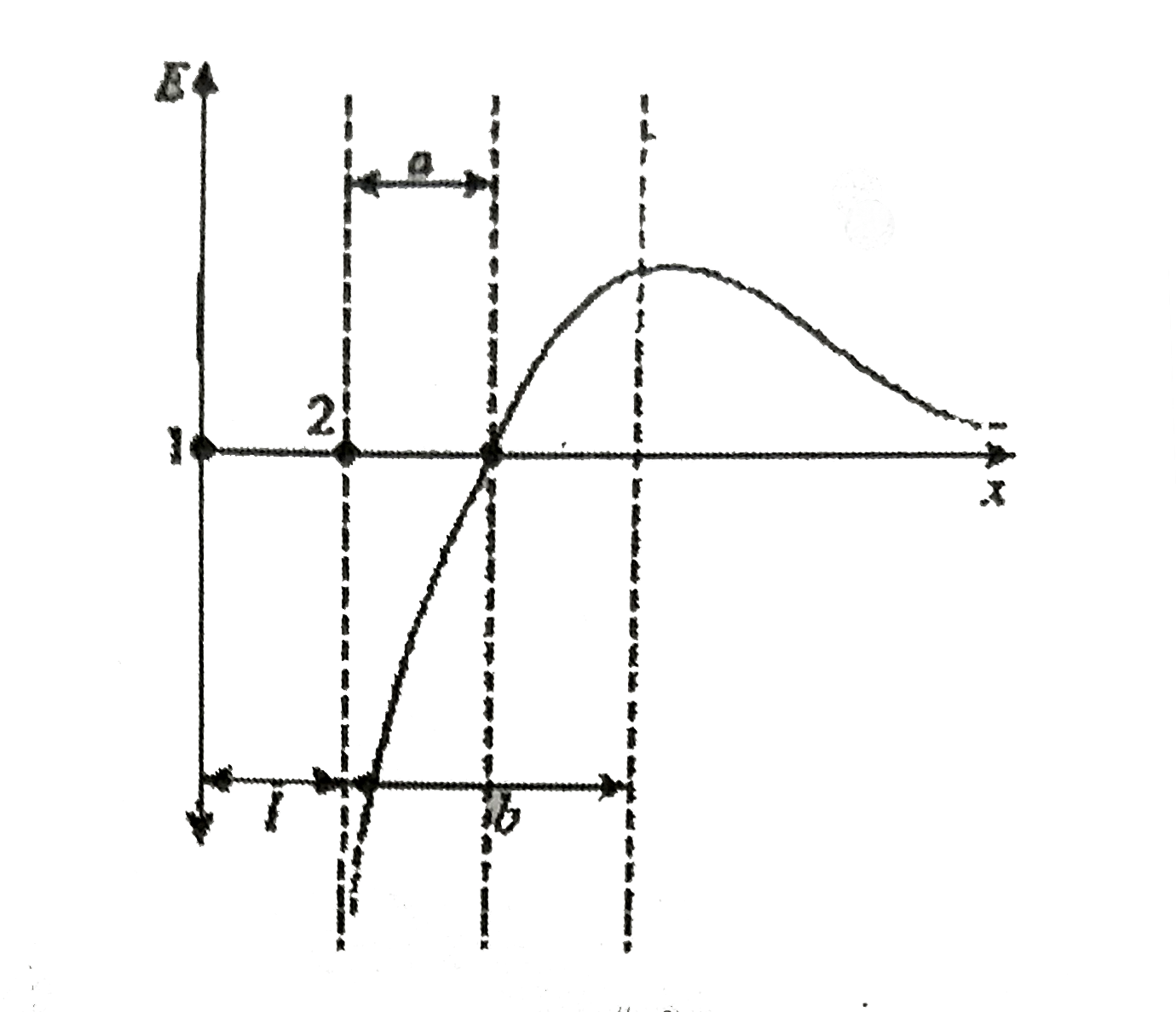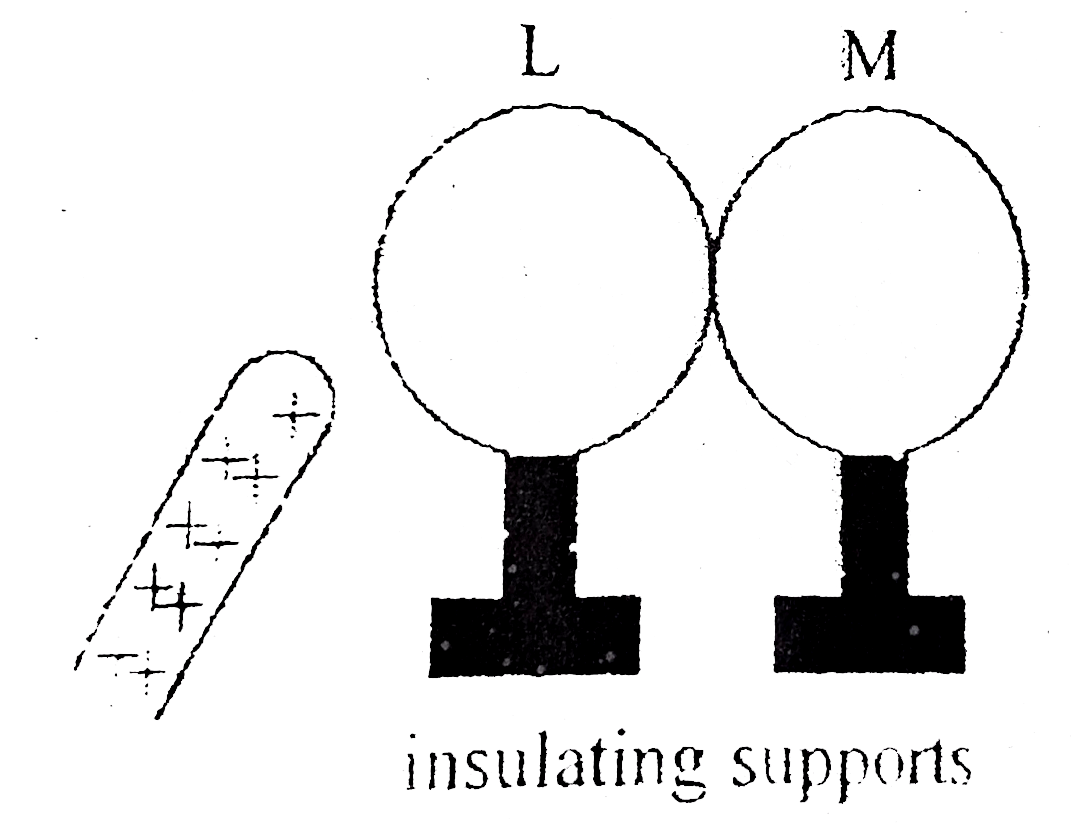A small uncharged sphere is positioned exactly in the midpoint between two charges whose absolute values are the same but whose signs are opposite. Suppose the sphere is shifted sornewhat. Will it remain in the new position or will it move in some direction?
Step by step video & image solution for A small uncharged sphere is positioned exactly in the midpoint between two charges whose absolute values are the same but whose signs are opposite. Suppose the sphere is shifted sornewhat. Will it remain in the new position or will it move in some direction? by Physics experts to help you in doubts & scoring excellent marks in Class 12 exams.
Updated on:21/07/2023Topper's Solved these Questions
Similar Questions
A sphere of mass M and radius R is held on the inner wall of a hollow sphere of mass 4M and radius 6R .The bigger sphere is kept on a smooth horizontal table and the centres of the two spheres lie on horizontal line.The system of two spheres is released from this position. The smaller sphere slides on the inner smooth wall to reach the other extreme position (shown in dotted line).The displacement of the centre of the larger sphere as the smaller sphere moves from one extreme to another is xcm. Value of x is: ( Take R=4.5cm) qquad y qquad yR Delta M
View SolutionA. small uncharged metal sphere is suspended hy a long nonconducting string in the region between the vertically positioned plates of a parallel-plate capacitor, closer to one plate than to the other. How will the sphere behave?
View Solution
Knowledge Check
A small uncharged metallic sphere is positioned exactly at a point midway between two equal and opposite point charges. If the sphere is slightly displaced towards the positive charge and released then
Ait will oscillate about its original positionBit will move further towards the positive chargeCits electric potential energy will decrease and kinetic energy will increaseDits total energy remains constant but is non-zeroA small uncharged metallic sphere is positioned exactly at a point midway between two equal and opposite point charges. If the sphere is slightly displaced towards the positive charge and released, then
Ait will oscillate about its original positionBit will move further towards the positive chargeCits potential energy will decrease and kinetic energy will increaseDthe total energy remains constant but is non-zeroForce between two identical spheres charged with same charge is F. If 50% charge of one sphere is transferred to the other sphere then the new force will be :-
A34FB38FC32FDnone of these
Two point charges Q1 and Q2 are positioned at points I and 2. The field intensity to the right of the charge Q2 on the line that passes through the two charges varies according to a law that is represented in the figure. The field intensity is assumed to be positive if its direction coincides with the positive direction on the x-axis. The distance between the charges is l.

(a) Find the sign of each charge
(b) Find the ratio of the absolute values of the charges ∣∣∣Q1Q2∣∣∣
(c) Find the value of b where the field intensity is maximum
[(a) Q2 is negative and Q1 is positive (b) (l+aa)2, (c) l(l+aa)2/3−1⎤⎥ ⎥ ⎥⎦
View SolutionAn uncharged metal sphere is placed between two equal and oppositely charged metal plates. The nature of lines of force will be
View SolutionTwo uncharged metal spheres, L and M, are in contact A positively charged rod is brought close to L, but not touching it, as shown. The two spheres are slightly separated and the rod is then withdrawn. As a result:

View SolutionIn two cases, two identical conducting sphere are given equal charges, in one case of the same type whereas in another case of opposite type. The distance between the spheres is not large comparing with the diameter. Let F1 and F2 be the magnitudes of the force of interaction between the spheres, as shown, then

View SolutionA negative charge is placed at the midpoint between two fixed equal positive charges , separated by a distance 2d . If the negative charge is given a small distancement x(x<<d) perpendicular to the line joining the positive charges , how the force (F) developed on it will approximately depend on x ?
View Solution
